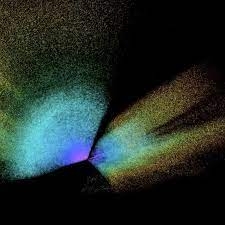The most prominent scientists of the nation have created the largest and most detailed 3D map of the universe using an instrument that has mapped out more galaxies than all other three-dimensional surveys combined. However, this spectacular map has been created by using the Dark Energy Spectroscopic Instrument (DESI). And this is managed by the United States Department of Energy’s Berkeley Lab.
Dark Energy Spectroscopic Instrument (DESI) has thousands of optic fibers that are able to pick up light from different galaxies at the same time. And then those optical fiber cables run down to 30 detectors interpreting the light into visible data that physicists and astronomers look at.
One of the prominent scientists, Berkeley Lab Scientist Julien Guy said, “In the distribution of the galaxies in the 3D map, there are huge clusters, voids, and huge filaments. But even within it, you will find imprints of the very early universe and the history of its expansion since then”.
Also, Berkeley Lab added to the above statement, the first instrument which picked up the light was built back in 2015, and in 2019 such instrument was temporarily shut down as a result of the COVID-19 pandemic. But now the work has been again continued remotely.
The invention of 3D map
- The 3D map is created with the help of a special instrument that is efficient to pick up radiation from distant bodies in space.
- Researchers are claiming that such a map would help the science community to understand the universe and its strongest light sources effectively.
- This map is a detailed 3D reflection of an entire galaxy.
- The most prominent scientists of the nation have created the largest and most detailed 3D map of the universe using an instrument that has mapped out more galaxies than all other three-dimensional surveys combined.
- This spectacular map has been created by using the Dark Energy Spectroscopic Instrument (DESI). And this is managed by the United States Department of Energy’s Berkeley Lab.
The map is the result of a project launched more than 20 years ago by an international group of astrophysicists. The project aimed to map the universe using data collected from a telescope in the southwestern U.S. state of New Mexico. The results come from the extended Baryon Oscillation Spectroscopic Survey (eBOSS), an international collaboration of more than 100 astrophysicists that is one of the SDSS’s component surveys.




































